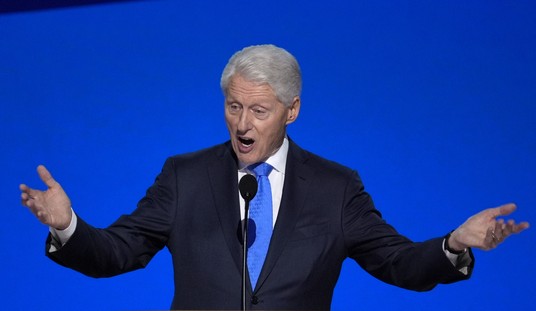This is part of the same terrible summer-camp guidance that reduced Anthony Fauci to giggles this morning and has been savaged even by other scientists as punitive and overcautious.
Walensky’s sticking with it despite the fact that the scenario presented here is one of the safest imaginable — young children, outdoors, mostly spread out.
Does she have a point, though? Skip to 2:30 and watch until 4:20. CNN anchor John Berman doesn’t try to hide his skepticism of her response.
.@CDCDirector Dr. Rochelle Walensky says CDC guidance will be updated as more people get vaccinated and there's less infection in the US.
"We are cautious … because there are still some places, some communities that have less than 20% vaccination and still a lot of disease." pic.twitter.com/tUG7dRsrPt— New Day (@NewDay) May 5, 2021
A Twitter pal countered with this guidance from the WHO:
Children should not wear a mask when playing sports or doing physical activities, such as running, jumping or playing on the playground, so that it doesn’t compromise their breathing. When organizing these activities for children, it is important to encourage all other critical public health measures: maintaining at least a 1-metre distance from others, limiting the number of children playing together, providing access to hand hygiene facilities and encouraging their use.
Telling kids to mask up while playing sports isn’t just a matter of inconveniencing them or making them uncomfortable. It’s a question of relative health risk during exertion. I’ve watched my heart rate get elevated while wearing a mask doing nothing more taxing than taking a brisk walk. Imagine playing an entire soccer match with one on.
Walensky’s not totally out of left field in worrying about kids playing sports, though. There’s this, for starters:

B.1.1.7 is the British variant, a strain that’s more contagious than the common coronavirus. It’s taken over here in the United States, making transmission that much more risky for unvaccinated people. And here’s what has Walensky spooked: Over the past few months the CDC has traced a number of alarming outbreaks of B.1.1.7 to … youth sports. Kids may be less likely to transmit the virus than adults are but they’re plenty capable of catching B.1.1.7 and passing it along. Some adults who’ve picked it up at youth sports events have died from COVID subsequently.
In Nevada, the B.1.1.7 variant — which has been confirmed in several studies to be more infectious — has been linked to an outbreak at a recent youth volleyball tournament. In Michigan, cases among those ages 10 to 19 have jumped 133 percent during the past month, faster than any other age group, and the state’s leading epidemiologist said the infections seem to have been spread through activities “including sports, but not limited to sports,” rather than in the classroom…
Officials say they believe transmission may be happening through athletic activities, rather than in the classroom, because some sports such as wrestling, basketball and volleyball involve close indoor contact. They have also wondered whether outbreaks may be triggered by related interactions such as carpooling, sleepovers and team celebrations, when people let their guard down, rather than from the practices and games themselves.
Not only that, WaPo went on to note, but transmission seemed to be happening differently in these cases than it did earlier in the pandemic. Last year scientists would often trace outbreaks back to a single superspreader event, in which a highly contagious carrier would pass the virus on to many people at the same time and in the same location. The youth-sports infections were actual chains, in which a few people would pick up the virus at the sports event, then pass it to others, then they’d pass it on, and so on. Which may be further evidence of B.1.1.7’s higher transmissibility: It doesn’t take a super-spreader to seed outbreaks with that strain, just an average joe with the wrong variant in his system. The last two states to have sizable surges, Michigan and Minnesota, each suffered outbreaks involving the British strain and kids playing sports.
That’s why Walensky’s nervous about a bunch of 10-year-olds crowding around a soccer ball. When you’re playing a sport, you’re breathing hard. If you’re breathing hard, you’re more likely to project viral particles. And if those particles happen to involve an unusually contagious virus, you may just seed a whole new strain of transmission.
Two questions, though. Is that really a risk with *outdoor* sports? The youth sports that bedeviled Michigan and Minnesota were ones like hockey, hoops, and volleyball, all of which are played indoors. Is there any evidence of outbreaks happening during games outside? And second, at what point do we decide that adults have had enough opportunity to get vaccinated that we’re not going to try to protect them by forcing kids to take heavy-handed precautions? Because that’s what Walensky’s thinking about — adults picking up the virus from kids, not the kids themselves getting sick. (Few kids were hospitalized after being infected at sports events this past winter and spring, WaPo points out.) Restricting youth sports to protect adults made sense two months ago, before everyone over age 16 became eligible for the vaccine. We’re past that now. If some mom or dad decides that they don’t want to be immunized for whatever reason and they’re willing to let their kid play soccer without a mask, why should we ask the kid to cover up? His parents have assumed an avoidable risk of infection. Let them take the consequences.
I’ll leave you with another public official defending another ridiculous COVID policy: D.C. Mayor Muriel Bowser being quizzed about her new “no dancing at wedding receptions” rule for Washington. That ban is so bizarre that it’s hard not to love it. I hope she digs in on it until a teary Fauci is forced to beg her on TV to lift the rule so that awful Beltway Zoomers can dance again. Stay strong, Muriel!
Mayor Bowser won’t commit to legalizing dancing even if everyone’s vaccinated pic.twitter.com/TttkPlqlyW
— Tom Elliott (@tomselliott) May 5, 2021







